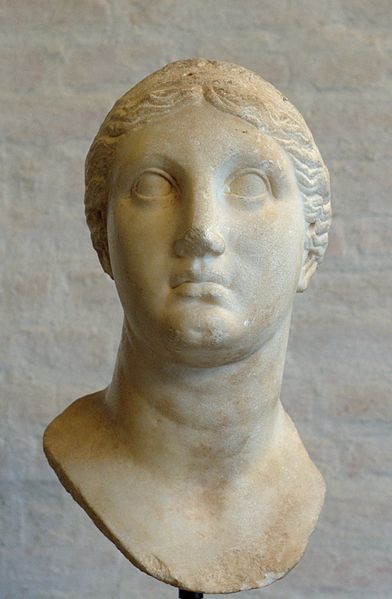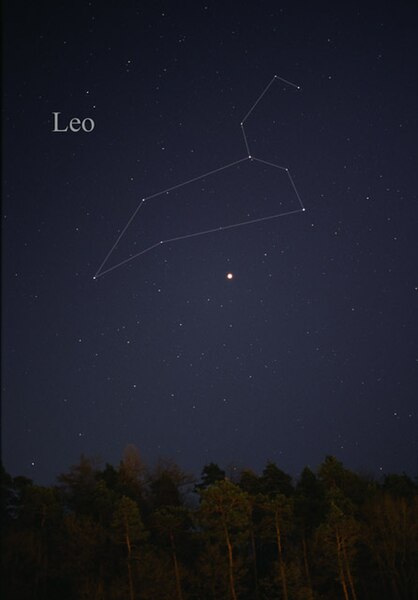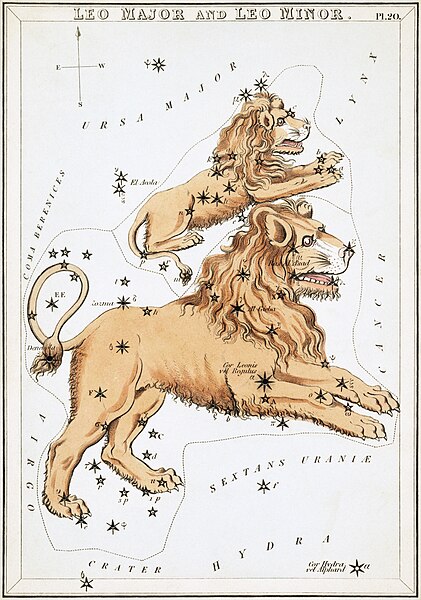Coma Berenices is an ancient asterism in the northern sky, which has been defined as one of the 88 modern constellations. It is in the direction of the fourth galactic quadrant, between Leo and Boötes, and it is visible in both hemispheres. Its name means "Berenice's Hair" in Latin and refers to Queen Berenice II of Egypt, who sacrificed her long hair as a votive offering. It was introduced to Western astronomy during the third century BC by Conon of Samos and was further corroborated as a constellation by Gerardus Mercator and Tycho Brahe. It is the only modern constellation named for a historic person.
Bust of Berenice II of Egypt
Coma Berenices on Mercator's 1551 celestial globe, in the upper left
Coma Berenices' major stars
Coma Berenices as seen by the naked eye
Leo is one of the constellations of the zodiac, between Cancer the crab to the west and Virgo the maiden to the east. It is located in the Northern celestial hemisphere. Its name is Latin for lion, and to the ancient Greeks represented the Nemean Lion killed by the mythical Greek hero Heracles as one of his twelve labors. Its old astronomical symbol is (♌︎). One of the 48 constellations described by the 2nd-century astronomer Ptolemy, Leo remains one of the 88 modern constellations today, and one of the most easily recognizable due to its many bright stars and a distinctive shape that is reminiscent of the crouching lion it depicts.
The constellation Leo as it can be seen by the naked eye (the bright object in the center of the picture is the planet Jupiter in March 2004).
Leo, with Leo Minor above, as depicted in Urania's Mirror, a set of constellation cards published in London c.1825
Messier 66
The notable gravitational lens known as the Cosmic Horseshoe








